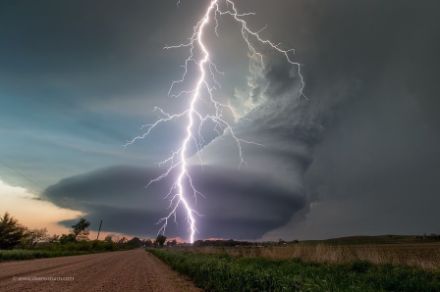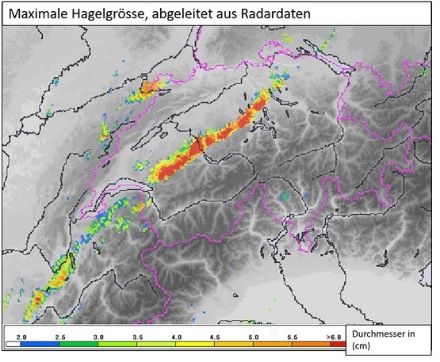Service Navigation
Search
Thunderstorms often occur as single entities, and form when there are only light winds at all altitudes. If the wind picks up sharply and substantially changes direction, this can give rise to a so-called supercell. At their base, supercells can reach a diameter of up to 50 km, and grow to a height of over 10 km, extending above the border of the troposphere.
How supercells are formed
In order for supercells to form, wind shear is needed in addition to a fully-fledged thunderstorm. Wind shear is caused either by differing wind speeds at different altitudes, or by differing wind directions. The strong updraft causes rotating air parcels within the thunderstorm to be tilted vertically. As a result, the updraft column itself begins to rotate. If the process intensifies even further, this can result in a tornado.

Destructive impact
In the thundercloud, updrafts and downdrafts cause precipitation particles to repeatedly circulate up and down. This can cause hailstones several centimetres wide to form. Because supercells often move rapidly, the hail is confined to narrow shafts. In the downwind area of the supercell, severe squalls or even tornadoes can occur.

Weather events lasting several hours
Supercells are extremely long-lasting. Because upwind and downwind areas are separated from each other and supercells move quickly, they can travel over long distances and be active for around three to twelve hours, and in extreme cases even up to 24 hours.
They often split into several daughter cells, which are not simply carried passively by the surrounding winds, but deviate significantly to the left or right. This phenomenon can be explained with the help of a fast-spinning football or tennis ball: A pressure minimum forms at the edge of the rotating updraft in the supercell, around which the surrounding air flows. New inflowing updraft pulses preferentially occur on this side of the thunderstorm, causing the entire thunderstorm cell to move in this direction. The current weather models are not able to predict whether and in which direction a thunderstorm will progress.